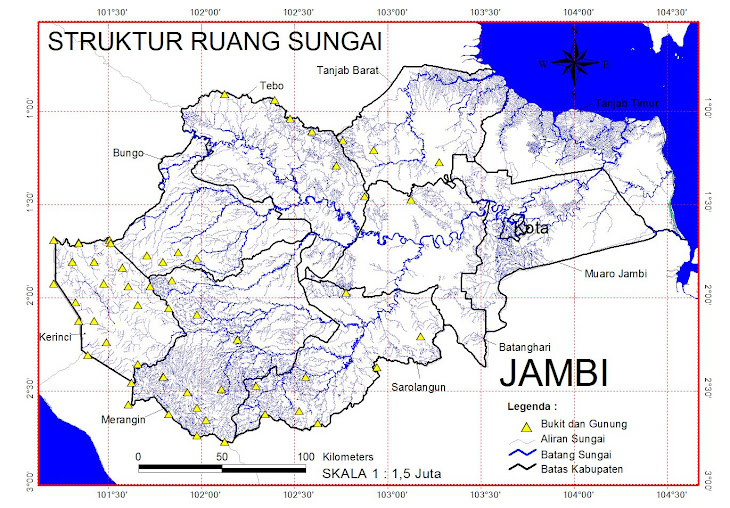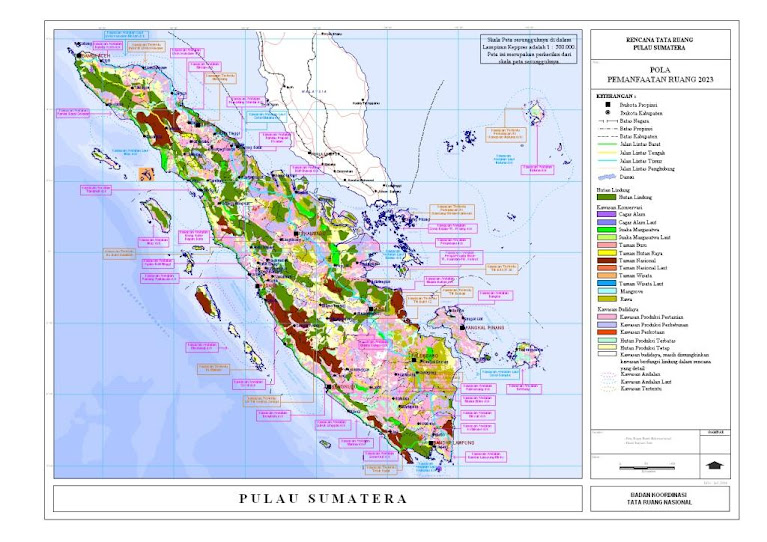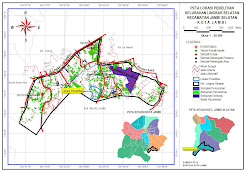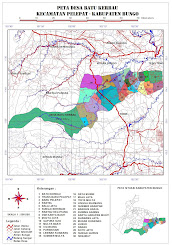Clark Labs has recently published a Focus Paper on modeling REDD baselines with the Land Change Modeler application in their IDRISI GIS and Image Processing software. Reducing Emissions from Deforestation and Forest Degradation (REDD) is a climate change mitigation strategy for the protection and maintenance of forests that has gained momentum with conservation organizations, project developers and governments in developing countries. As forests play a major role in the sequestration of carbon, especially tropical forests, REDD offers great potential for reducing greenhouse gas emissions. Carbon offset payments, based on an assigned financial value for the likely carbon storage capacity of protected or maintained forests, provide incentives for adopting such a strategy.
A REDD project is comprised of a number of significant components and requires the expertise and input of multiple parties. This paper discusses one of the required elements, the modeling of a baseline, a scenario of the likely greenhouse gas emissions if the project were not to be implemented. The modeling relies on land cover and land use change maps as its foundation. Baseline mapping includes determining historical deforestation rates and patterns, identifying the unique drivers and underlying factors of the area’s deforestation, and modeling potential scenarios.
The new Focus Paper provides a general overview, featuring a case study of a REDD project developed by the government of Madagascar
Wednesday, March 17, 2010
Modeling Deforestation in the Bolivian Lowlands Species and Carbon Impacts - Carbon Impact
Carbon Impact



Wednesday, March 10, 2010
Modeling Deforestation in the Bolivian Lowlands Species and Carbon Impacts - Model Development
Model Development

In our case, forest change was modeled based on land cover maps from 1992 to 2001 (Figure 2). To assess the quality of the model, a prediction was made to 2004 for comparison with a known validation map. The resulting model attained a Pierce Skill Score of .61. Two types of maps were produced: a hard prediction map that expresses one change scenario (Figure 3) and a soft prediction map (Figure 4) which provides a comprehensive assessment of change potential, i.e., a map of vulnerability to change for the selected set of transitions. The soft prediction result therefore shows the potential that any given area may change at some future date and is very important for identifying areas of high risk: an important planning concern.



Once the model was calibrated, additional future scenarios were then produced. One such scenario was a prediction of the Bolivian Lowlands to the year 2015 (Figure 3) and the assessment of this scenario on endemic species habitat. Using collections of species range polygons, initially supplied by NatureServe and subsequently recalibrated using LCM, a species richness map was developed for all birds, mammals, and amphibians. The Bolivian Lowlands is home to 73 endemic species, 36 amphibians, 16 mammals, and 21 birds. This map was combined with the 2015 soft prediction map to derive a risk of biodiversity loss (Figure 5). We then applied the same process to all the endemic vertebrate species to derive a risk of endemic loss (Figure 6).

 Assuming business as usual, the potential loss could be devastating to biodiversity in
Assuming business as usual, the potential loss could be devastating to biodiversity in 
Friday, March 5, 2010
Modeling Deforestation in the Bolivian Lowlands Species and Carbon Impacts - Introduction
Introduction
Tuesday, February 23, 2010
Comparison of Two GIS-based Land Change Modules for Constructing REDD Baselines in Bolivia
AAG - 2010 Annual Meeting, Washington, DC
Comparison of Two GIS-based Land Change Modules for Constructing REDD Baselines in Bolivia
is part of the Paper Session:
Land Use and Spatial Analysis
scheduled on Sunday, 4/18/10 at 8:00 AM.
Author(s):
Oh Seok Kim* - Department of Geography, University of Southern California
Abstract:
With the increasing concerns in developing methodologies for Reducing Emissions from Deforestation and Degradation (REDD) projects, there is a need to understand the characteristics of existing Land-Use/Cover Change (LUCC) modules. This research presents a comparison of two existing approaches: GEOMOD Modeling (GM) and Land Change Modeler (LCM). The comparison uses data from a case study in Chiquitanía, Bolivia. Data from 1986 and 1994 are used to simulate land-cover of 2000; the resulting maps are compared to an observed land-cover map of 2000. GM and LCM simulate baseline deforestation at the pixel-level. The model structures of linear extrapolation and Markov chain are compared to review quantity of LUCC; and the model structures of empirical frequency, logistic regression and multilayer perceptron are compared to review allocation of LUCC. Relative operating characteristics, figure of merit and multiple resolution analysis are employed to assess predictive accuracy of multiple transition modeling. By design, GM lacks the potential to model multiple transitions, while LCM may produce different results for each simulation. Based on the model structure and predictive accuracy comparisons, the LCM's logistic regression seems the most suitable LUCC module to construct a REDD baseline in this case. However, it is crucial to emphasize that these results are strictly limited to this particular case. Thus, there is no obvious method that is most accurate, so if a REDD project employs predictive GIS-based LUCC modeling for its spatially-explicit baseline construction, it should include the framework employed in this research to establish the baseline in a scientific manner.
is part of the Paper Session:
Land Use and Spatial Analysis
scheduled on Sunday, 4/18/10 at 8:00 AM.
Author(s):
Oh Seok Kim* - Department of Geography, University of Southern California
Abstract:
With the increasing concerns in developing methodologies for Reducing Emissions from Deforestation and Degradation (REDD) projects, there is a need to understand the characteristics of existing Land-Use/Cover Change (LUCC) modules. This research presents a comparison of two existing approaches: GEOMOD Modeling (GM) and Land Change Modeler (LCM). The comparison uses data from a case study in Chiquitanía, Bolivia. Data from 1986 and 1994 are used to simulate land-cover of 2000; the resulting maps are compared to an observed land-cover map of 2000. GM and LCM simulate baseline deforestation at the pixel-level. The model structures of linear extrapolation and Markov chain are compared to review quantity of LUCC; and the model structures of empirical frequency, logistic regression and multilayer perceptron are compared to review allocation of LUCC. Relative operating characteristics, figure of merit and multiple resolution analysis are employed to assess predictive accuracy of multiple transition modeling. By design, GM lacks the potential to model multiple transitions, while LCM may produce different results for each simulation. Based on the model structure and predictive accuracy comparisons, the LCM's logistic regression seems the most suitable LUCC module to construct a REDD baseline in this case. However, it is crucial to emphasize that these results are strictly limited to this particular case. Thus, there is no obvious method that is most accurate, so if a REDD project employs predictive GIS-based LUCC modeling for its spatially-explicit baseline construction, it should include the framework employed in this research to establish the baseline in a scientific manner.
Thursday, February 18, 2010
Workshop at the AAG Annual Meeting
Modeling REDD-Baselines Using IDRISI's Land Change Modeler
Tuesday, April 13, 1:00pm – 4:00pm
Instructors:
Workshop Capacity: 30
Room: Lincoln Room 3
Room: Lincoln Room 3
The implementation of REDD projects requires a best estimate of the deforestation and/or degradation baseline. The baseline is derived from the spatial modeling of the expected future trends of deforestation using maps of historical deforestation and biomass estimates.
Land Change Modeler (LCM) is a robust modeling tool that allows calibration, validation and the creation of maps of expected future deforestation trends. Clark Labs, in conjunction with Conservation International, has designed a REDD tool within LCM which guides the user through the steps of baseline development and directly produce tables and graphics necessary in the reporting process.
This workshop will cover the complexity of REDD baseline creation using real case studies to illustrate the process.
Tuesday, February 2, 2010
LCM on Google's Earth Engine interface.
Clark Labs Receives Support from Google.org to Develop an On-line Prototype of its Land Change Modeler Application to be run on Google’s Earth Engine
Worcester, MA -- Google has contracted Clark Labs to develop an on-line prototype of the Land Change Modeler application to run on Google’s Earth Engine interface. This development complements the on-line forest monitoring applications of Carnegie Institution for Science (CLASlite) and IMAZON (SAD), demonstrated on Earth Engine at the COP 15 meeting in Copenhagen last month.
The on-line prototype will contain much of the functionality of the land change modeling component of Clark Labs’ Land Change Modeler application, included within the IDRISI GIS and Image Processing software, as well as within its extension to ArcGIS. The system will allow users to analyze, model and predict deforestation and then to evaluate the amount of carbon involved.
The hope is that this on-line system will help support the implementation and evaluation of REDD (Reducing Emissions from Deforestation and Degradation) projects. The intent of REDD is to assign financial value to the carbon stored in forests such that sequestration of that carbon becomes a viable alternative to other uses such as conversion to pasture and farmland. The Land Change Modeler provides a critical ingredient for REDD projects in that it can be used to establish the business-as-usual (BAU) baseline that projects the future deforestation in the absence of a REDD project. Quantification of this projected deforestation and comparison with various governance scenarios provides the basis for evaluation of the carbon stocks involved and potential compensation.
It is hoped that the REDD program will lead to a significant reduction in CO2 emissions, enhance ecosystem services and biodiversity conservation, and provide opportunities for poverty reduction.
Implementing REDD projects will depend on modeling which requires significant data and computing resources. Google’s new Earth Engine platform will ameliorate the financial burden of implementing REDD projects.
“The objective of Earth Engine is to enable organizations such as Clark Labs to run their algorithms on-line, powered by Google’s computational capacity, with easy access to massive earth observation data sets,” indicated Dr. Amy Luers, Senior Environment Program Manager for Google.org.
At this time, many governmental and non-governmental organizations are using the Land Change Modeler as their primary analytical tool for REDD project development. Clark Labs, in conjunction with Conservation International, is currently augmenting its Land Change Modeler suite to ensure compatibility with the World Banks’ BioCarbon Fund (BioCF) methodological framework.














Tidak ada komentar:
Posting Komentar